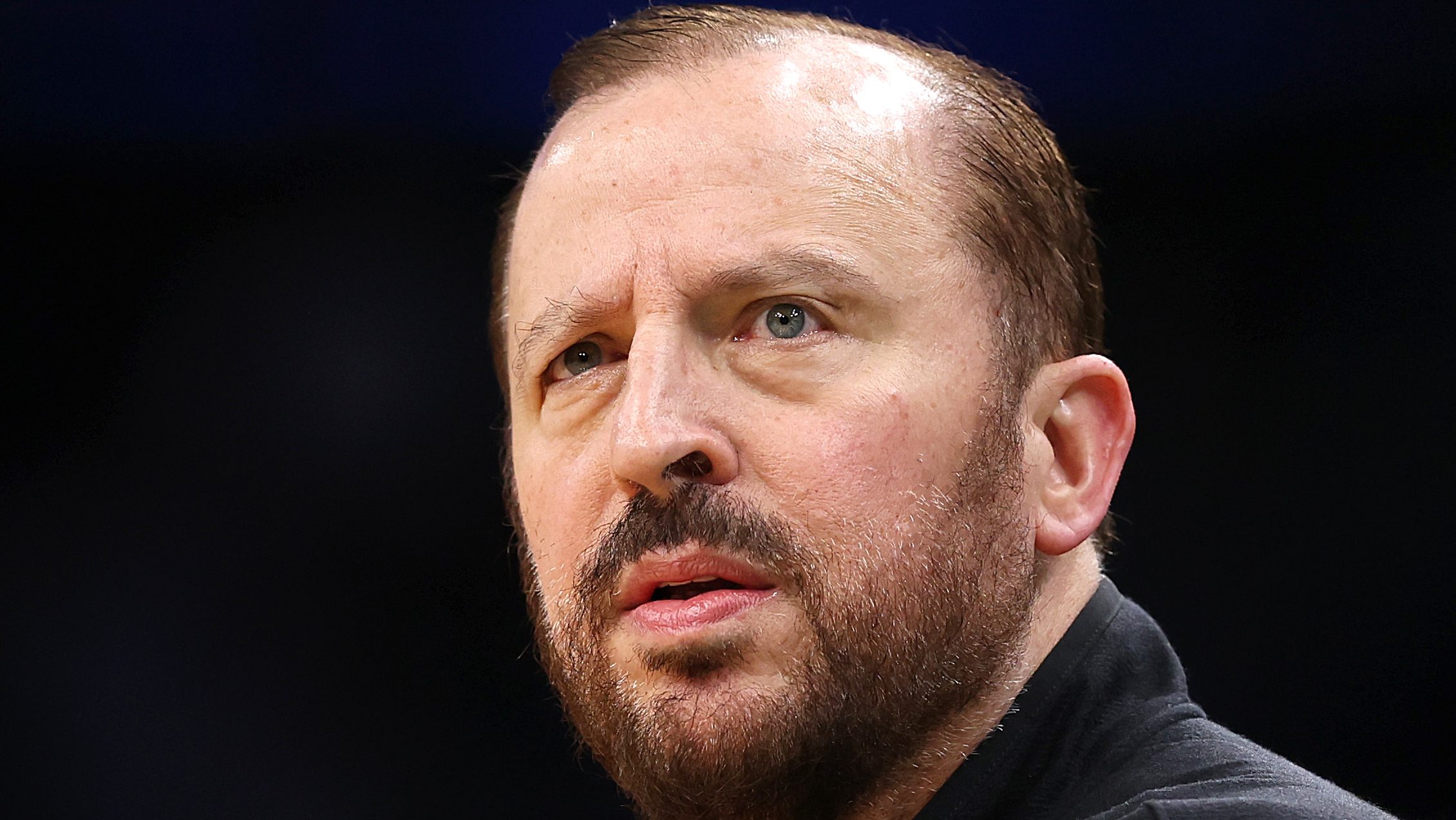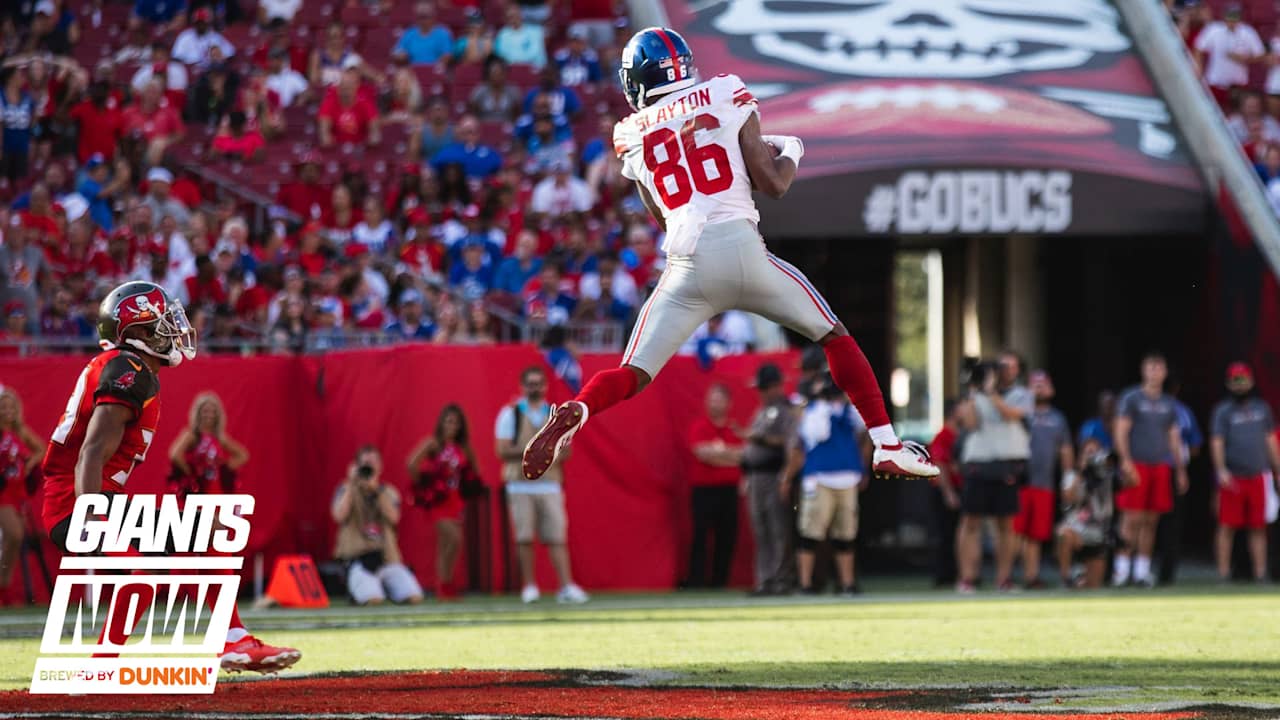Football
Fantasy Football ‘24: Running back rankings and tiers

Welcome to Part II of my Fantasy Football Redraft Rankings and Tiers for 2024. On Wednesday I covered the Quarterbacks, and today I’m “tackling” the running backs. Real NFL football will be here before you know it, and fantasy drafts will be here even sooner.
The big running back news this offseason was a dizzying carousel of player movement. Friends, check your programs, because there are lots of old faces in new places. A slew of bigger-name and smaller-name “starting” RBs moved to new teams, as NFL franchises continued a trend of redefining the value and salary cap economics of the position. If you’ve been watching Hard Knocks, you know what I’m talking about. How bad has it gotten for RBs? Bad. Consider this: Gabe Davis (age 25) and Saquon Barkley (age 26) signed almost identical three-year deals with new teams this offseason, with almost the same amount guaranteed. Davis is at best a Top-45 wide receiver in the league, while Barkley is a consensus Top-7 RB. Ouch. If both stay healthy this season, Barkley will likely have at least 200 more touches than Davis, and a bunch more yards and TDs.
Barkley got that new deal from the division-rival Eagles (a tough pill for Giants’ fans to swallow) and while he and 30-year-old Derrick Henry were the highest profile RBs to switch teams this offseason, they weren’t alone. Joe Mixon, Josh Jacobs, Aaron Jones, D’Andre Swift, Tony Pollard, Devin Singletary, Gus Edwards, and Zack Moss are all presumptive starters on new teams. Austin Ekeler, Antonio Gibson, and several others who are familiar fantasy names also will be in new uniforms. In my Kickoff Article, I explained why I’m taking a cautious drafting approach to most of the running backs who switched teams.
The value of running backs has also shifted some in Fantasy Football. I’ve been playing fantasy for 30 years and it wasn’t all that long ago that first rounds of fantasy drafts were totally dominated by the top running backs. But that’s changed, to the point that last season, for the first time that I can recall the consensus top pick in fantasy was a wide receiver (Justin Jefferson), and six of the Top 12 in average draft position (ADP) were wide receivers, while only five were running backs.
Why the shift at the top? There are several reasons. Three-down workhorse backs have become a rarity, and some type of RB-by-committee has become the NFL norm. Consider that in 2005, 18 RBs averaged more than 20 touches per game, while in 2022 and 2023, the corresponding numbers were three RBs and four RBs, respectively. In addition, the shift across fantasy to PPR scoring in a pass-happy era has benefitted WRs more than RBs. And while all NFL players are at risk of injury, RBs touch the ball more than wide receivers and are a bit more likely to get hurt. Christian McCaffrey is the consensus top pick this year, but once again more wide receivers will go in the first round of drafts this year than running backs. Still, running back is an extremely important position in fantasy, and the supply of players you would want to start in fantasy is constrained. Whether you plan to use a Zero RB , Hero RB, or more traditional approach, getting an early handle on the position, which is a little thin at the top but has good depth below that, is a good idea.
I’ve organized my running backs into tiers, and you should do the same. I discussed the reasons for using tiers in the QB Column, so I won’t repeat them here. Tiers are an essential element of sound drafting.
So, let’s get to it. Note that my rankings and tiers are for HALF PPR, and all stats and rankings noted in the commentary reflect that scoring system. In Full PPR, backs who play a bigger role in the passing game obviously have a bit more value.
RB rankings and tiers (Half PPR)
Tier I — The super studs
1. Christian McCaffrey
2. Bijan Robinson
3. Breece Hall
Commentary: Last year, I had one player in a tier of his own atop a position (Travis Kelce), and I debated that rare distinction with McCaffrey this season. His 22.4 fantasy points per game (FPPG) in 2023 was the best mark for a running back since 2020 and was 2.5 points better than No. 2 Kyren Williams. But I’m including Robinson and Hall with him, in part because McCaffrey is 28 and also because both of those younger backs are in better situations this year (as in, they now have real QBs, plus Bijan now has a coaching staff that’s likely to feature him more) and are poised to take a leap in production. All three of the backs in this tier are threats to catch 70+ passes, which is huge for their fantasy value. One way to think about this tier is that these are the three RBs who are guaranteed to go in the first round of your 12-team draft, and you can’t say that about the running backs below them.
:no_upscale()/cdn.vox-cdn.com/uploads/chorus_asset/file/25538624/1915650832.jpg)
Tier II – Solid RB1s
4. Jonathan Taylor
5. Kyren Williams
6. Saquon Barkley
7. Jahmyr Gibbs
8. Travis Etienne
9. Derrick Henry
10. Rachaad White
11. Isiah Pacheco
Commentary: Perhaps the top three backs in this tier should be a separate grouping, but I’ve got them all together because I see pretty similar ranges of outcomes for them. All of these backs should be gone by around the 30th pick of drafts. Every back in this group has at least one question mark, but all have a shot at finishing in the Top 5. If Kyren Williams gets the same usage as last year, an argument can be made to move him into the top tier. Henry and Barkley are on new teams with running quarterbacks who could vulture some TDs, but also with much better offenses than what they left behind. At the bottom of the tier, Rachaad White was an inefficient runner last year (his 3.6 average yards per carry ranked near the bottom of qualifying RBs), but got so much running and passing volume, and goal-line work, that it didn’t matter. I’ve got Pacheco higher than most. His usage in the playoffs (at least 24 touches in three of four games) was eye-opening, KC is clearly comfortable leaning on him with a big workload, and it’s an offense that should bounce back.
:no_upscale()/cdn.vox-cdn.com/uploads/chorus_asset/file/25538632/1922360584.jpg)
Tier III—Low-end RB1s/High-end RB2s
12. Josh Jacobs
13. Devon Achane
14. Joe Mixon
15. James Cook
16. Alvin Kamara
17. Ken Walker III
18. James Conner
19. David Montgomery
20. Aaron Jones
Commentary: Can the Lions really support two Top-20 running backs? Yes, they can. The early-down back in Ben Johnson’s offense has scored double-digit TDs in back-to-back seasons, and they’re going to be nursing plenty of leads. Achane is the hardest player in this group to handicap, and if you want him you’ll have to pay up. But he showed last year that he doesn’t need a lot of touches to score fantasy points, and the upside of his game-breaking speed in Mike McDaniel’s offense is tantalizing. The rest of the options in this group all come with some question marks, and they’re all going to split time to some degree, but there are some solid options here. James Conner outperforms his draft slot every single year, and if James Cook can improve on the six TDs he scored last year, he’ll be a steal at his draft price. Joe Mixon is on the all-boring team, plus he’s on a new team, but is always a good bet to give you low-end RB1 production.
:no_upscale()/cdn.vox-cdn.com/uploads/chorus_asset/file/25538640/1935806665.jpg)
Tier IV—RB2s
21. Najee Harris
22. Rhamondre Stevenson
23. Raheem Mostert
24. Zack Moss
25. D’Andre Swift
26. Zamir White
27. Devin Singletary
28. Jaylen Warren
29. Tony Pollard
30. Jonathon Brooks (R)
31. Brian Robinson, Jr.
Commentary: Like the tier above this one, there are some solid options here for your RB2. If you decide to go with a “Zero RB” strategy and the first back you draft is in this group, then you’ll probably want to take two of them, as the drop-off to the next tier isn’t so minor. Mostert finished last season as the RB2, so it might seem strange to see him all the way down at RB23. But he’s the oldest back in the league at 32, Miami added a third-round running back (Jaylen Wright) in the draft, and Achane might see more of the work. Harris and Warren both have a chance to be viable RB2s/Flex options this season, in what should be a very run-heavy Arthur Smith offense that features a rebuilt O-line. Keep an eye on the reports on Brooks during camp, as he continues his recovery from a torn ACL last fall.
Tier V – Low-end RB 2s/Flex Plays
32. Javonte Williams
33. Gus Edwards
34. Austin Ekeler
35. Tyjae Spears
36. Nick Chubb
37. Jerome Ford
38. Ezekiel Elliott
39. Chase Brown
40. Zach Charbonnet
41. Trey Benson (R)
Commentary: Most of the players listed here will need an injury (to someone else) to really pop, but all could work as a third running back, or even as your second running back if you get a little lucky. Nick Chubb’s timetable for return is uncertain, so his ranking (and Jerome Ford’s) is likely to move one way or the other as the season gets closer. And I won’t be shocked if the Cowboys trade for or sign another RB before the season starts.
Tier VI – Backups with upside/top handcuffs
42. Blake Corum (R)
43. Kendre Miller
44. Jaleel McLaughlin
45. MarShawn Lloyd (R)
46. J.K. Dobbins
47. Rico Dowdle
48. Ty Chandler
49. Antonio Gibson
50. Tyler Allgeier
51. Roschon Johnson
52. Elijah Mitchell
53. Ray Davis (R)
Commentary: I’m generally a believer in handcuffing higher-end RBs, and many in this tier are handcuffs, but most of them also have some stand-alone value. A few running backs in this tier (Dobbins, McLaughlin, and Dowdle, among others) have a shot at leading their backfield in touches even without an injury to the presumptive starter.
Tier VII – RB depth
54. Khalil Herbert
55. Alexander Mattison
56. Braelon Allen (R)
57. Dameon Pierce
58. Bucky Irving (R)
59. Justice Hill
60. D’Onta Foreman
61. Jaylen Wright (R)
62. Clyde Edwards-Helaire
63. Tank Bigsby
64. Kimani Vidal (R)
65. Audric Estime (R)
66. Keaton Mitchell
67. Kenneth Gainwell
68. Tyrone Tracy, Jr. (R)
69. Miles Sanders
70. Dylan Laube (R)
Commentary: Ready to throw some darts? I like leaving a draft with good running back depth, since (a) fantasy-viable running backss pop out of nowhere every season, often due to injuries, and (b) it’s often hard to find much help at running back on the waiver wire, and when you can it’s often a competitive stampede in the wake of those injuries. There are a few names here (some of whom are handcuffs) that could be real values on your bench. The trick is figuring out which ones. Much of that is just going to be dumb luck, so you’re on your own, folks. My advice is to draft a couple of guys that you like from this group, late in your draft. You can always cut them if you need to.
That’s it for the running backs. Next up, the wide receivers.










